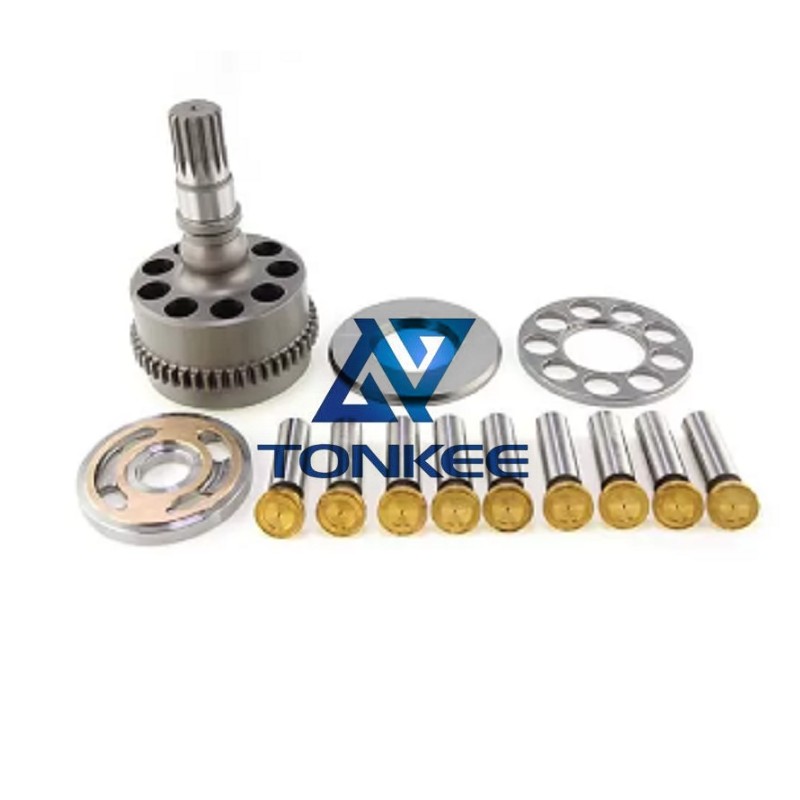
Housing: The motor housing is a sturdy casing that encloses and protects the internal components of the swing motor.
It is typically made of durable materials to withstand the rigors of excavator operation.
Hydraulic Ports: The motor has hydraulic ports that allow for the connection of hydraulic hoses from the excavator's hydraulic system. These ports enable the flow of hydraulic fluid to control the motor's operation.
Motor Assembly: At the core of the swing motor is the motor assembly itself, which consists of various parts such as a piston, swash plate, and other internal components. The motor assembly is responsible for converting hydraulic pressure into rotational motion.
Bearings: High-quality bearings are used to reduce friction and ensure smooth rotation of the swing motor. These bearings are critical to the longevity and efficiency of the motor.
Seals: Seals are used to prevent hydraulic fluid leakage and to keep contaminants out of the motor. Proper sealing is essential to maintain the motor's performance.
Drive Gear: The swing motor typically has a drive gear that connects to the excavator's slew ring, which is part of the undercarriage. The interaction between the drive gear and slew ring enables the upper structure of the excavator to rotate.
Specifications:
The specifications of a hydraulic swing motor can vary depending on the specific model and manufacturer, but here are some common factors to consider:
Flow Rate: The flow rate of hydraulic fluid into the motor is a crucial specification.
It's typically measured in liters per minute (LPM) or gallons per minute (GPM) and determines the speed of rotation.
Torque: Torque is the twisting force that the motor can generate and is measured in units like pound-feet (lb-ft) or Newton-meters (Nm). The torque output is a key specification for assessing the motor's power.
Speed: The rotational speed of the swing motor is another important specification and is typically measured in revolutions per minute (RPM).
Mounting Type: The way the swing motor is mounted to the excavator's frame can vary. Common mounting types include flange mounts or face mounts.
Size and Weight: The physical size and weight of the swing motor are important considerations, as they can affect the excavator's overall balance and stability.



 English
English Русский язык
Русский язык



